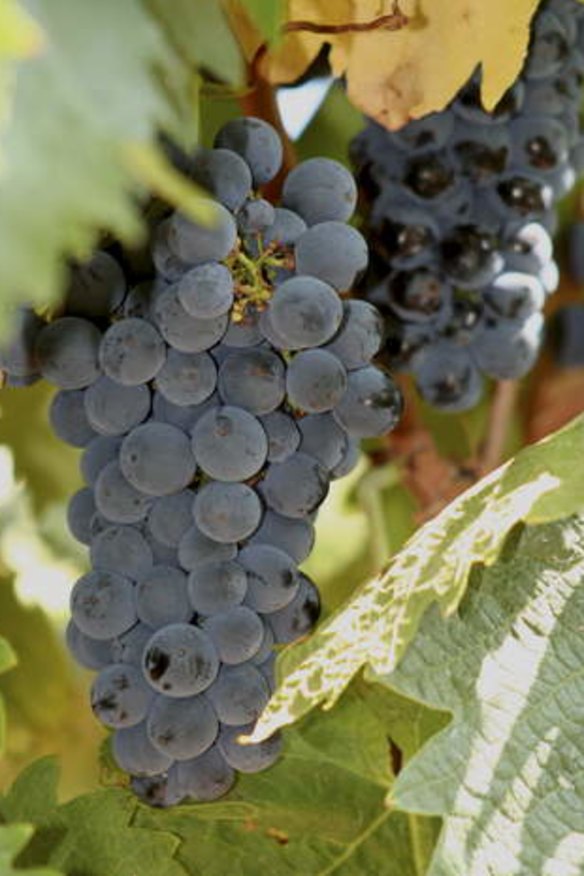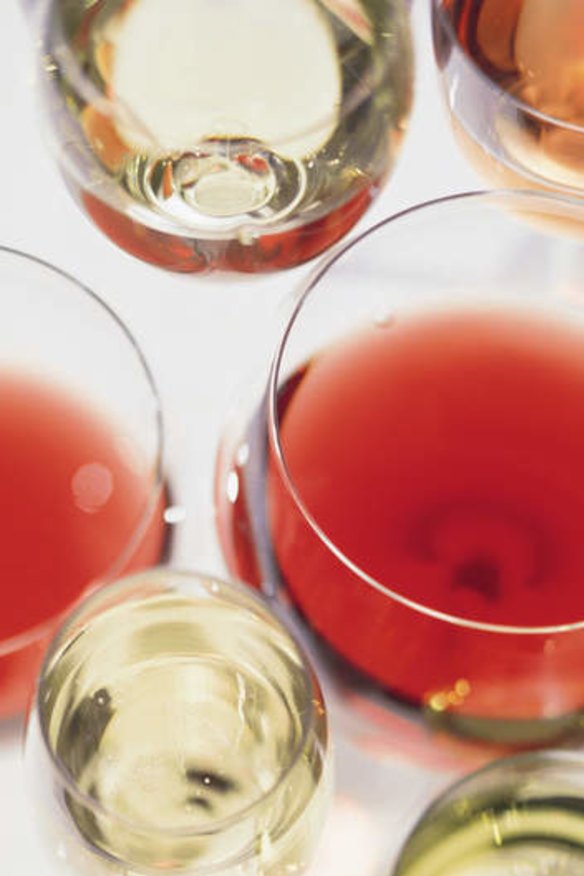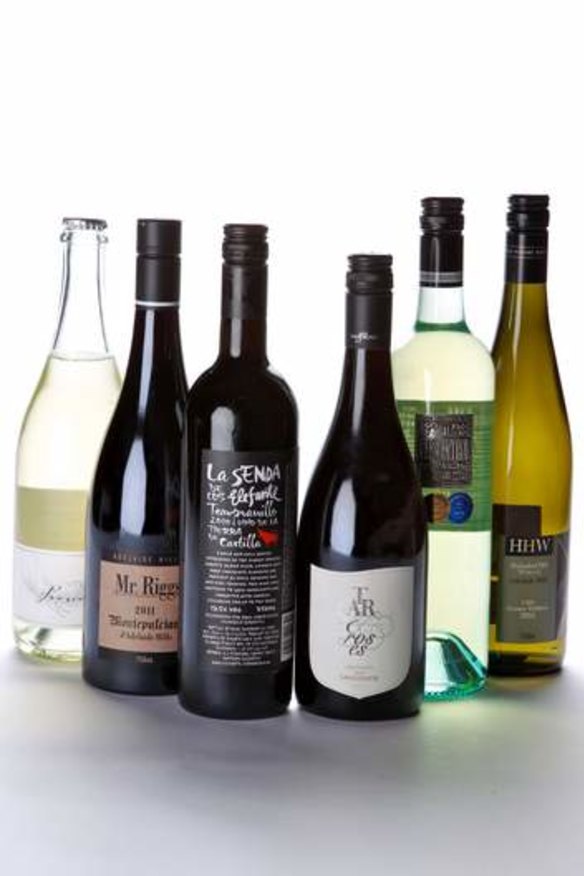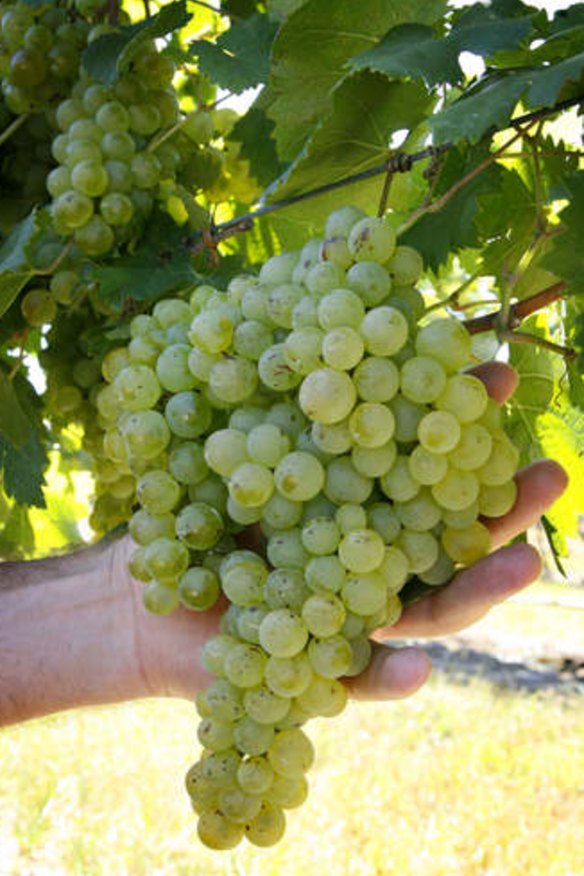The 10 best wines you've never heard of
Sure, shiraz and the hardy chardy are reliable drops, but it's high time we expanded our viticultural horizons.

Why are we so unadventurous as wine drinkers? Shiraz, cabernet and chardonnay are the three most common wines produced by Australian wineries and sold in Australian shops. There is a whole world of possibilities out there, so why reach for the same old, same old?
Italy has 377 grape varieties, many of them unknown to us. Wine Grapes (HarperCollins, 2012), the outstanding reference book by Jose Vouillamoz, Jancis Robinson and Julia Harding, lists 1368 grape types worldwide.
But nearly 90 per cent of Australia's wine comes from just 10 grape varieties. Shiraz alone accounts for about 28 per cent - more than a quarter of our wine from one grape! Three grapes - shiraz, cabernet sauvignon and chardonnay - together make up 60 per cent of our wine-grape harvest.

Things are improving, though. Slowly. A multitude of ''new'' varieties has been planted into our vineyards in the past decade or two. Tempranillo, sangiovese, fiano, gruner veltliner and more. We even have an ''alternative varieties'' wine show, and lately they've kicked out pinot gris-grigio, because it's become so common that it no longer qualifies as ''alternative''.
We've made a start, but we need a lot more variety in our menu. It's my belief this is a big part of the explanation for the recent boom in imported wines. We're bored and we want more light and shade in our drinking diet.
With the growth in sales of the wine drinker's most recent craze - sauvignon blanc - tapering off, experts are predicting that being adventurous and trying unfamiliar wines might become ''the next big thing''.

So, have you tried these?
1. Friulano
A native white of north-eastern Italy's Friuli region whence it takes its name, friuli is used often in complex blends with, among others, sauvignon blanc, traminer, pinot grigio and chardonnay. It's hardly known in Australia, but Kathleen Quealy, one of our most innovative winemakers, is making it her signature grape. Friulano makes a highly perfumed, very soft wine with gentle acidity. It's an excellent pre-dinner aperitif.

AUSTRALIA
Quealy Amphora Friulano, Mornington Peninsula 2012, $25
Yes, it was fermented in an amphora! Fragrant, slightly musky, peppery and vaguely muscat-tinged aromas, fresh and youthful, with just a whisper of smokiness. The palate is rich and smooth, clean and fruity but also has a savoury side. Silky soft, with a dry finish and good palate harmony.
ITALY
La Roncaia Friulano, Colli Orientali del Friuli 2011, $59
Medium-full yellow colour. Magnificent bouquet of mixed spices, honey and poached peach and apricot; a hint of orange peel: tremendously rich and aromatic. The palate is opulent and multi-faceted, with great balance and refinement despite the richness of its flavour. A mightily impressive white.
2. Gruner Veltliner
Austria's signature grape, grown throughout Austria and a few eastern European countries but only recently planted further afield. We have tiny plantings of gruner in the Adelaide Hills, Canberra district and Tasmania. Nickname is gru-vee. It makes a distinctive, unwooded, refreshingly crisp dry white, which can also age well. It's a very adaptable food wine, especially good with fish and seafood, particularly shellfish. If you like sauvignon blanc, try this as an alternative.
AUSTRIA
Salomon Undhof Wieden & Berg Gruner Veltliner, Kremstal 2010, $30
Pale-coloured, with a rich nose of fresh herbs and peppery cucumber varietal character. Soft, rounded and nicely balanced with a clean, dry palate and some opulence.
AUSTRALIA
Hahndorf Hill Gruner Veltliner, Adelaide Hills 2012, $28
Aromas of salad leaf, a hint of stone fruit. Crisp and bracing, with pepper and spice flavours, and mouth-watering acidity.
3. Vermentino
One of Australia's fastest-spreading ''alternative'' white vines. A native to Sicily, where it makes a light, delicate, usually unwooded, sometimes neutral dry white, which can be excellent with fish. Well suited to warmer climes.
AUSTRALIA
Berton Vineyards Vermentino, Riverina 2012, $12
Crisp, crunchy and lightly herbal, this is a fresh, simple, unwooded dry white that shocked the NSW Wine Awards judges with its quality and price. Fruity palate and a near-dry finish: satisfying yet refreshing.
FRANCE
Ulithorne Corsus Vermentinu (sic), Vin de Pays, Corsica 2012, $34
That's how they spell it in Corsica. Pale-hued, with a lightly peppery aroma, hints of talc, fresh herbs and other, more savoury notes. Delicate in the mouth; light-bodied and dry, lean and savoury, not fruity. Fairly simple but well made: it's an adaptable food wine.
4. Viognier
Its home is France's Rhone Valley. It's not exactly new to this country, but slow to catch on because of its unpronounceable name (vee-ohn-yay) and propensity to make fat, oily, clumsy wines. In the right hands, it can be sublime. It has a high degree of difficulty to make because of its low yields and thick skins, which tend to produce tannic wine. It's typically full-bodied, rich and textural, which makes it a good alternative to chardonnay. Its typical aromas are apricot and mixed spices. It suits richer white meats such as pork and roast chicken.
AUSTRALIA
By Farr, Geelong 2010, $59
Exquisite, spicy, flowery bouquet with complexity from smoky, toasty oak.
The flavour is voluminous and gorgeously smooth, with a pillowy roundness, yet it's not even remotely fat, oily or lacking acidity. A great viognier, as good as any from France.
FRANCE
Clusel-Roch Condrieu Verchery 2009, $99
Condrieu is the appellation and this one is classy. Very complex, with honeysuckle, spice and stone-fruit aromas. Fragrant, rich, full-bodied and dense, but without the heaviness or tannin grip that viognier can display - it remains light on its feet.
5. Pinot Blanc
A less-known German and Alsatian white grape that is related to chardonnay, pinot gris and pinot noir. In northern Italy, it's pinot bianco. It makes a light, soft, fairly straightforward wine. In good hands, it can be honeyed and delicious. At the table, try serving it with vegetable dishes, such as eggplant involtini.
AUSTRALIA
Hoddles Creek Estate 1er Pinot Blanc, Yarra Valley 2012, $40
Possibly Australia's only commercial pinot blanc, this has a whiff of sulfides when first poured, underneath an intriguing pear and honey flavour. Decant it, if you like, to aerate before serving.
FRANCE
Albert Mann Pinot Blanc Auxerrois, Alsace 2010, $29
A full-yellow colour and buttered-toast bouquet indicate some bottle age. Smoky development plus peach, spices and honeydew melon. Soft, light, fruity flavour that is off-dry, finishing with good balance.
6. Prosecco
A fashionable Italian sparkling-wine grape, which I confess to often finding simple and ordinary, and not as cheap as it tastes. The Italians recently changed the grape's name to glera (although it remains prosecco on labels) in an effort to stop other countries capitalising on its fame. Australians still call it prosecco. The wine is usually young and fruity, without champagne's yeast autolysis, and refreshingly crisp and appetising at its best. It's best used as an aperitif.
ITALY
Adriano Adami Bosco di Gica Brut Prosecco di Valdobbiadene DOC non-vintage, $39
Pale colour with a vigorous, frothy mousse of bubbles. Aromas are peppery and creamy with some fresh yeasty notes. It's straightforward, with a touch of well-balanced sweetness and a fluffy, creamy texture.
AUSTRALIA
Boynton's Prosecco, Alpine Valleys 2011, $30
A pale-yellow wine with a restrained bouquet of wet-stone, straw and creamy fruit, with a hint of charcuterie. Attractive savoury flavours in the mouth, with creamy texture and good length. It's more than just simplistic fruit; a very likeable, food-friendly bubbly.
7. Tempranillo
The most-planted red vine in Spain, where it's grown everywhere, with interesting differences - much like shiraz in Australia. It should suit our climates like a glove, but we've been slow to make it work. Australian plantings are increasing strongly. Best results have come from those who don't try too hard to impress but allow it to make a lighter, fruit-driven, early-drinking red. If you like shiraz, try tempranillo for a change.
SPAIN
La Senda de los Elefante Vino de la Tierra de Castilla, La Mancha 2010 $16
Dusty, earthy, savoury bouquet with some oaky hints, and dark-cherry fruit. Good concentration and firm tannins. A solid, savoury, seriously structured red at an amazing price.
AUSTRALIA
Angullong Fossil Hill Tempranillo, Orange 2011 $22
Gloriously fresh and aromatic, with bright primary cherry and spice aromas galore, and a medium-bodied palate with gentle tannins and easy-drinking softness.
8. Nebbiolo
The great grape of Piedmont's statuesque Barolo and barbaresco wines. A pale-coloured, high-tannin, non-fruity wine with a high degree of difficulty, and probably mystifies a lot of consumers. Like pinot noir, it disappoints often, but is occasionally transcendental, with gloriously complex aromas. It needs protein: try aged parmesan cheese, especially reggiano, or slow-braised meats.
AUSTRALIA
Pizzini Nebbiolo, King Valley 2009, $48
Medium brick-red colour; developed savoury herbal aromas, with earth, shoe-leather and root-vegetable notes. Some cigar-box and roasting-pan aged aromas. Has a core of fruit sweetness, mellow and charming, surrounded by a blinding swirl of tannin. Delicious but it demands protein, such as rare beef or aged hard cheese.
ITALY
Vietti Perbacco Nebbiolo Langhe DOC 2009, $55
Intense cherry and tobacco aromas, spicy and complex, with savoury-style fruit and no sign of oak. Hints of dried bay leaf and walnut; pristine cherry fruit on the palate, underlined by drying, savoury nebbiolo tannins. An exemplary nebbiolo delle langhe, with greater depth and intensity than most.
9. Sangiovese
Another tricky Italian red variety, the backbone of Chianti, Brunello and other great Tuscan wines, but it manages to elude most Australians who attempt it. Can be bony, tart and fruitless. Why bother, you might ask? As with nebbiolo, it's the challenge of making something as excitingly different as the great Italians. Like tempranillo, our best efforts so far are the opposite of ''try-hard'' wines. The typical sangiovese character is dried cherry or dried plum, with a stern backbone of tannin, which means it needs food, especially protein. Braised meats and aged cheeses are ideal.
ITALY
Babo Toscana IGT Sangiovese, Tuscany 2010, $24
Deep-red-purple colour and bright, clean, black-fruit aromas with some aniseed notes. Soft in the mouth with blackberry flavours and liberal soft, fine-grained tannins. A modern style, made by an Aussie, but it doesn't sacrifice its terroir.
AUSTRALIA
Tar & Roses Sangiovese, Heathcote 2012, $23
Youthful, deep-red, purple-tinged colour leads into a smoky, spicy, black-fruit aroma. It's young and loaded with bold flavour and emphatic tannins. It finishes quite drying, but look deeper and you'll find richness and density.
10. Montepulciano
A humble Italian red grape from the Abruzzo region, on the Adriatic side of Italy. When well done, it can be the everyday-drinking character-red par excellence, soft and slurpable. There are few producers in Australia so far, and the wines - while good - don't resemble the Italians. Goes with pretty well everything from pizza to veal parmigiana.
AUSTRALIA
Mr Riggs Montepulciano, Adelaide Hills 2011, $27
Very deep, dark red-purple colour with a vibrant aroma of mint and red fruits - raspberry to red cherry. It's a very Australian-style red, with its mintiness and bold fruit. But there's also a hint of more Italianate walnut, pepper and spice. It's lively, medium-weighted and vivacious.
ITALY
Zaccagnini Montepulciano d'Abruzzo DOC 2009, $32
Excellent deep-red-purple colour. Crushed-rock and shale-like aromas, minerally, earthy - not fruity. Hints of pepper and spices, a tinge of animal. The flavour is fleshy and smooth, soft in tannin and with good extract. There's a good balance between fruit and savoury features, with more fruit than many Italian reds.
--------------------------------------------------------
Reader offer: our wine tasting pack
Sample wines from our list of great lesser-known varietals though this special offer: a mixed case of six different bottles - two whites, three reds and one sparkling - for $99 (plus delivery). Recommended retail price is $136. Included wines are Boynton's Prosecco 2011, Hahndorf Hill Gruner Veltliner 2012, Berton Vineyards Vermentino 2012, La Senda de los Elefante 2010, Tar & Roses Sangiovese 2012 and Mr Riggs Montepulciano 2011. To buy, see goodfood.com.au/buywine.
